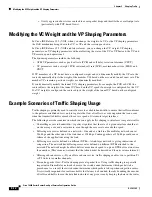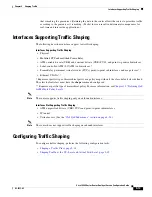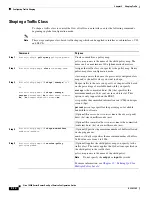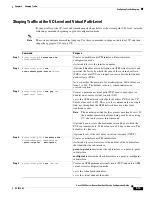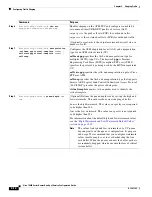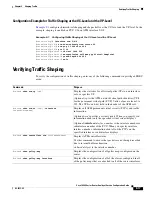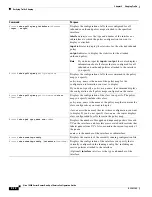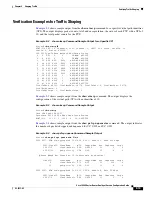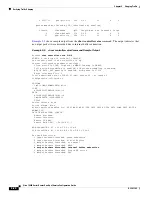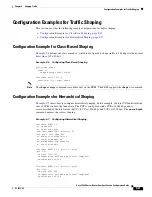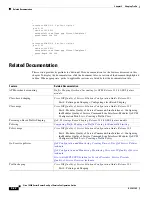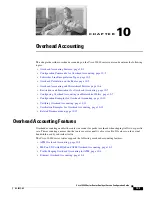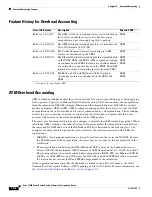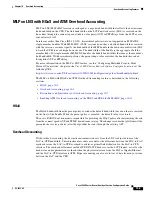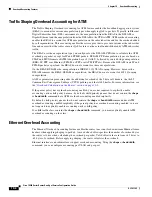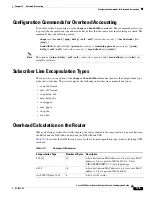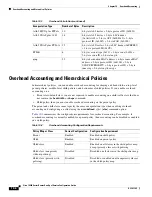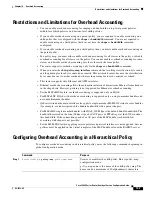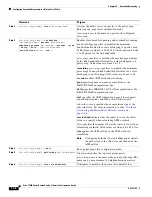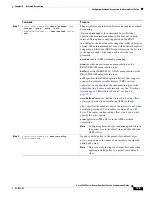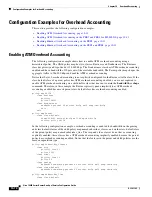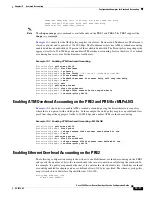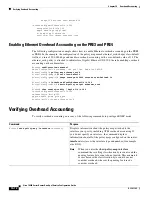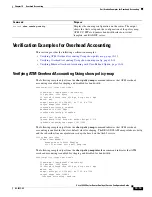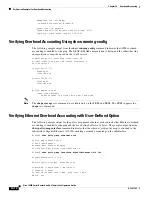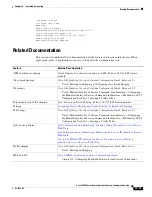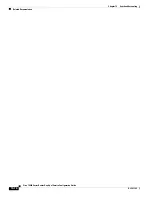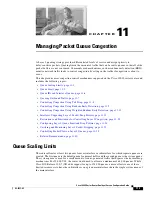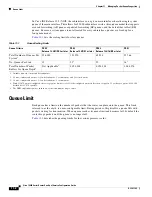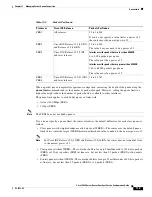
10-4
Cisco 10000 Series Router Quality of Service Configuration Guide
OL-7433-09
Chapter 10 Overhead Accounting
Overhead Accounting Features
Traffic Shaping Overhead Accounting for ATM
The Traffic Shaping Overhead Accounting for ATM feature enables the broadband aggregation system
(BRAS) to account for various encapsulation types when applying QoS to packets. Typically, in Ethernet
Digital Subscriber Line (DSL) environments, the encapsulation from the BRAS to the DSLAM is
Gigabit Ethernet and the encapsulation from the DSLAM to the CPE is ATM. ATM overhead accounting
enables the BRAS to account for ATM encapsulation on the subscriber line and for the overhead added
by cell segmentation. This accounting enables the service provider to prevent overruns at the subscriber
line and ensures that the router executes QoS features on the actual bandwidth used by ATM subscriber
traffic.
The BRAS uses the encapsulation type you configure for the DSLAM-CPE side to calculate the ATM
overhead per packet, except for IP and PPPoE packets. DSLAM-CPE encapsulation types are based on
SNAP and MUX formats of ATM Adaptation Layer 5 (AAL5), followed by routed bridge encapsulation
(RBE), IP, PPP over Ethernet (PPPoE), or PPP over ATM (PPPoA). Because the DSLAM treats IP and
PPPoE packets as payload, the BRAS does not account for these encapsulations.
On the BRAS-DSLAM side, encapsulation is IEEE 802.1Q VLAN or qinq. However, because the
DSLAM removes the BRAS-DSLAM encapsulation, the BRAS does not account for 802.1Q or qinq
encapsulation.
AAL5 segmentation processing adds the additional overhead of the 5-byte cell headers, the AAL5
Common Part Convergence Sublayer (CPCS) padding, and the AAL5 trailer. For more information, see
the
“Overhead Calculation on the Router” section on page 10-5
.
If the parent policy has overhead accounting enabled, you are not required to explicitly enable
accounting on the child policy because, by default, child priority queues that do not contain the
shape
or
bandwidth
command have ATM overhead accounting enabled implicitly.
By default, child priority queues that do not contain the
shape
or
bandwidth
command have ATM
overhead accounting enabled implicitly if the parent policy has overhead accounting enabled; you are
not required to explicitly enable accounting on the child policy.
If a child traffic class contains the
shape
or
bandwidth
command, you must explicitly enable ATM
overhead accounting on the class.
Ethernet Overhead Accounting
The Ethernet Overhead Accounting feature enables the router to account for downstream Ethernet frame
headers when applying shaping to packets. A user-defined offset specifies the number of overhead bytes
the router is to use when calculating the overhead per packet. Valid offset values are from +63 bytes to
-63 bytes of overhead. Before applying shaping, the router calculates the overhead.
Ethernet interfaces and subinterfaces support overhead accounting. Using the
shape
or
bandwidth
command, you can configure accounting per VLAN and per port.

